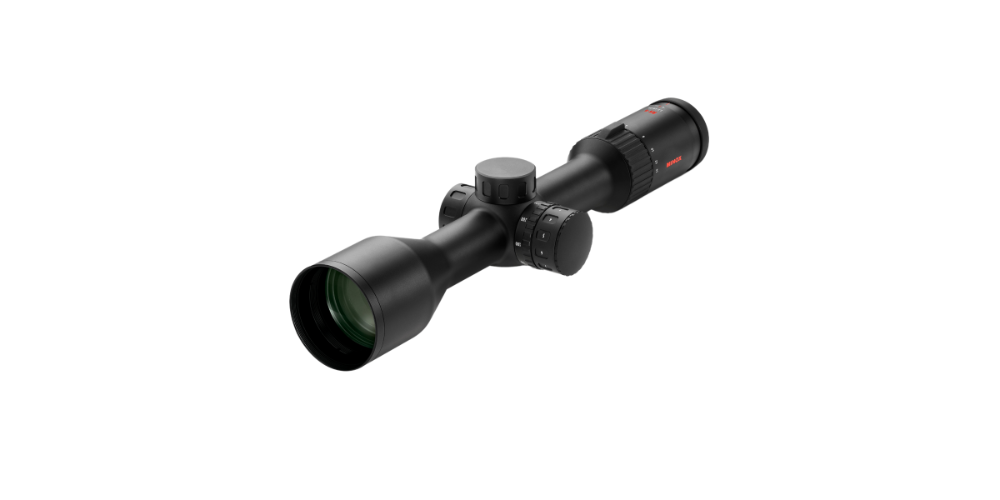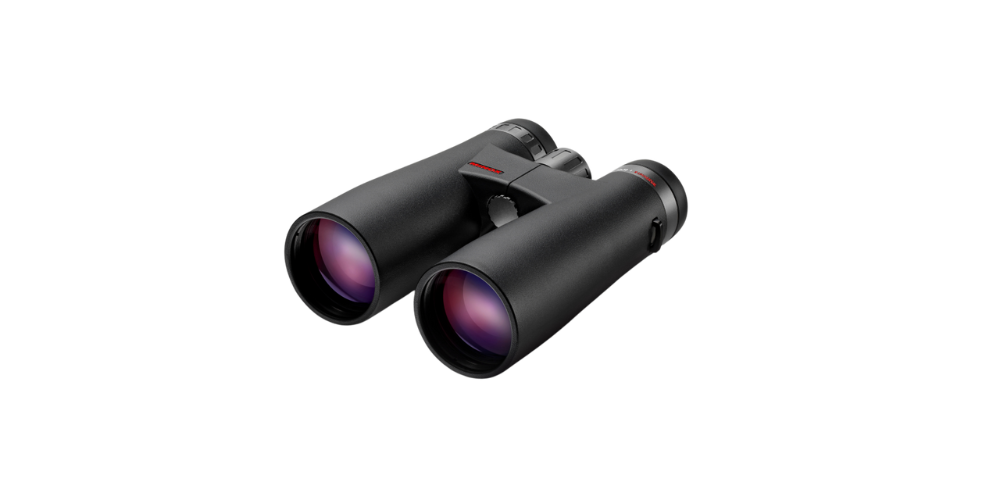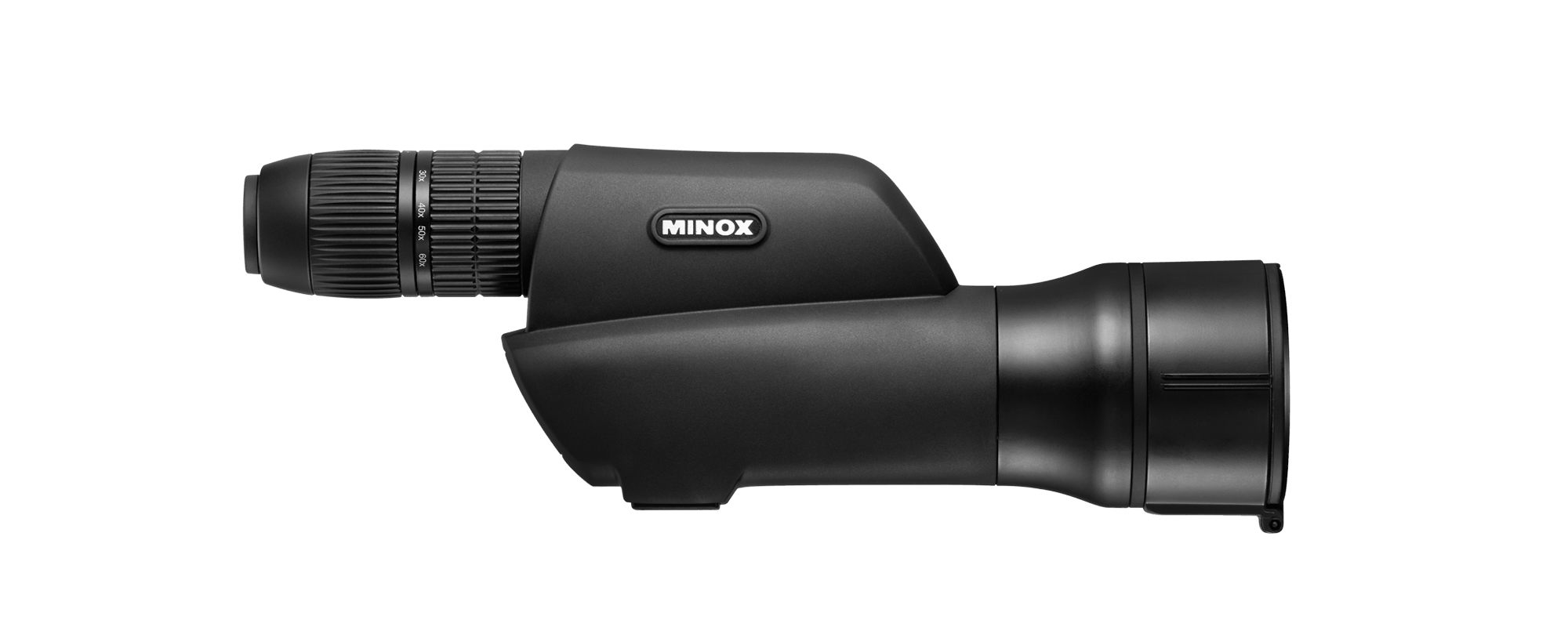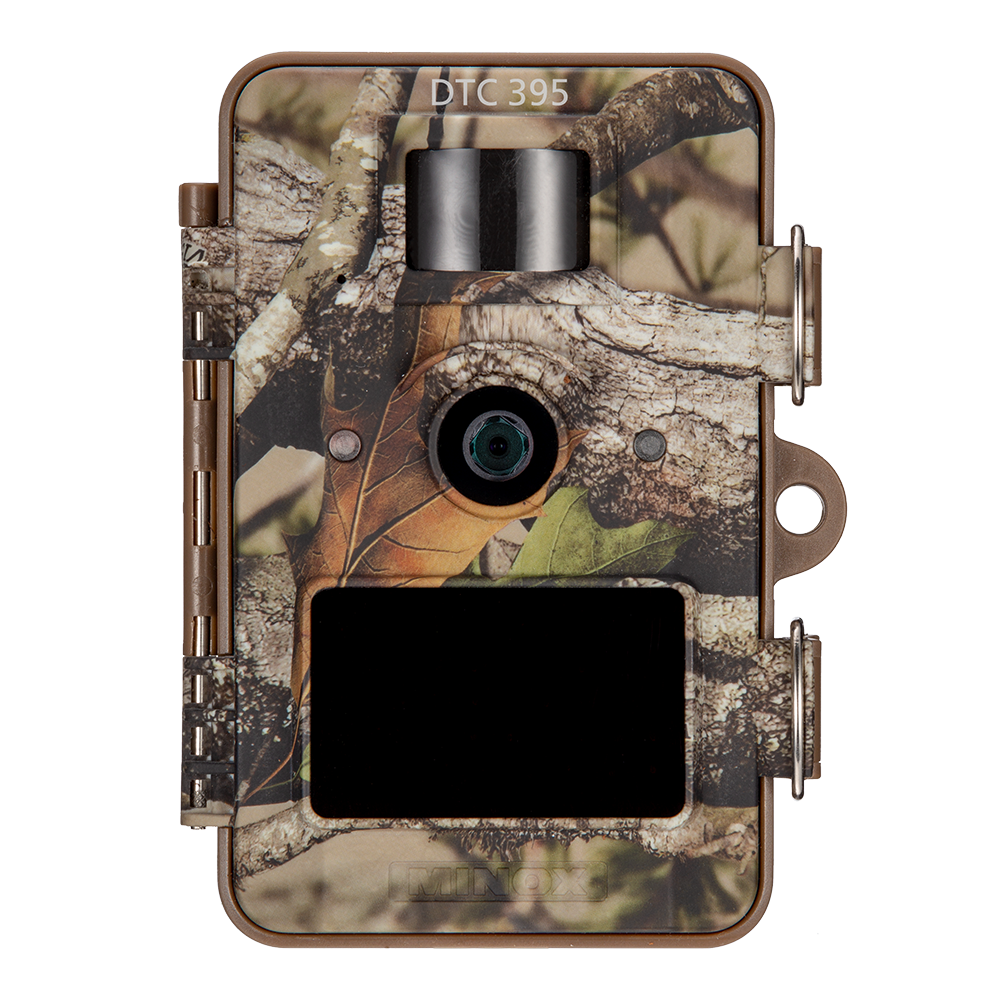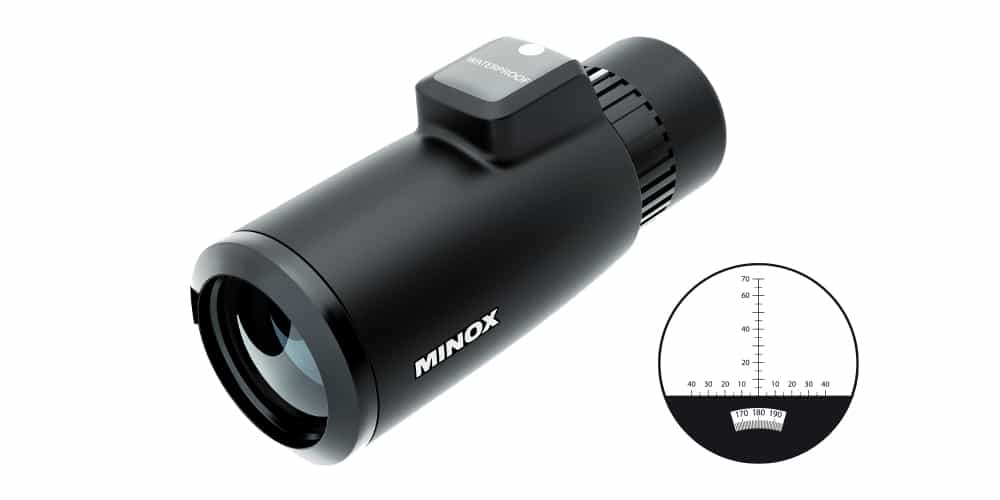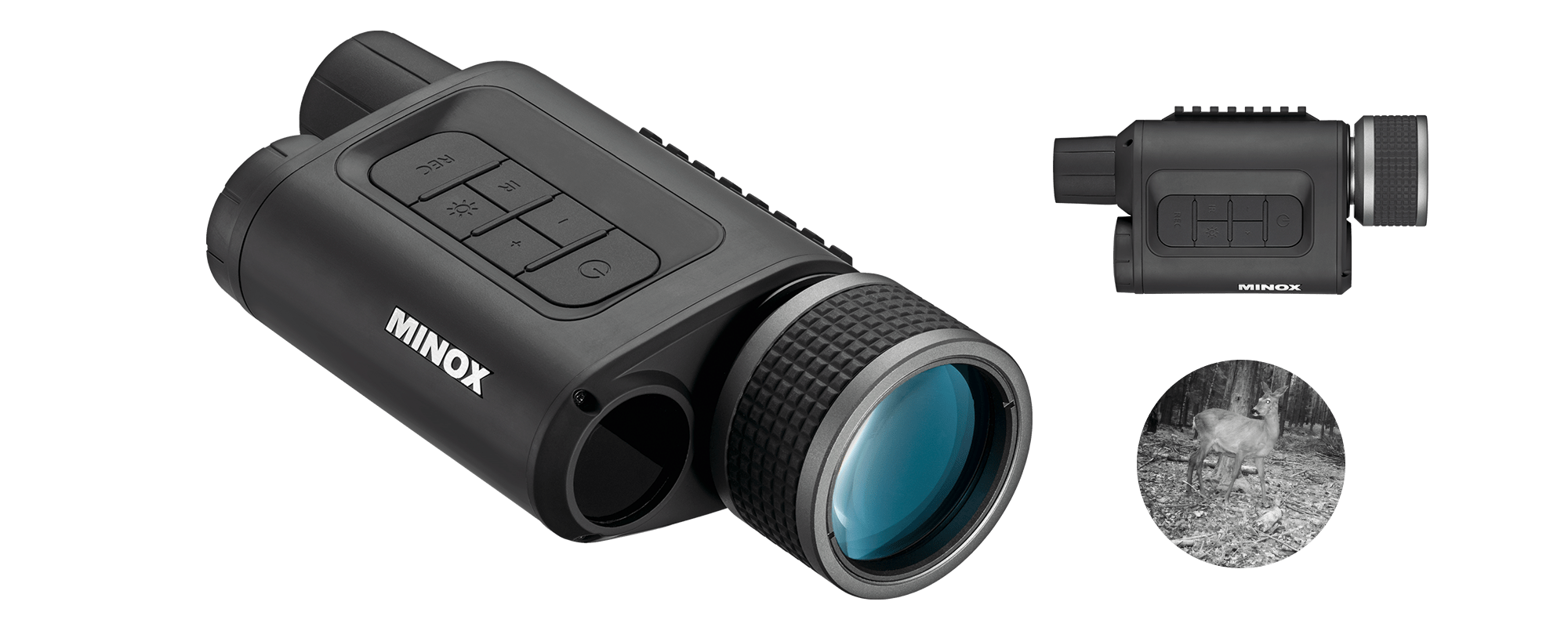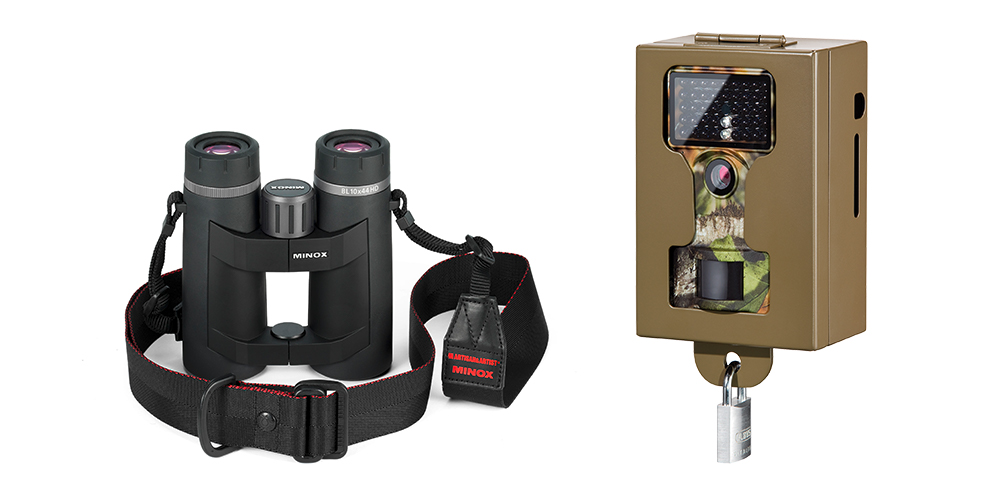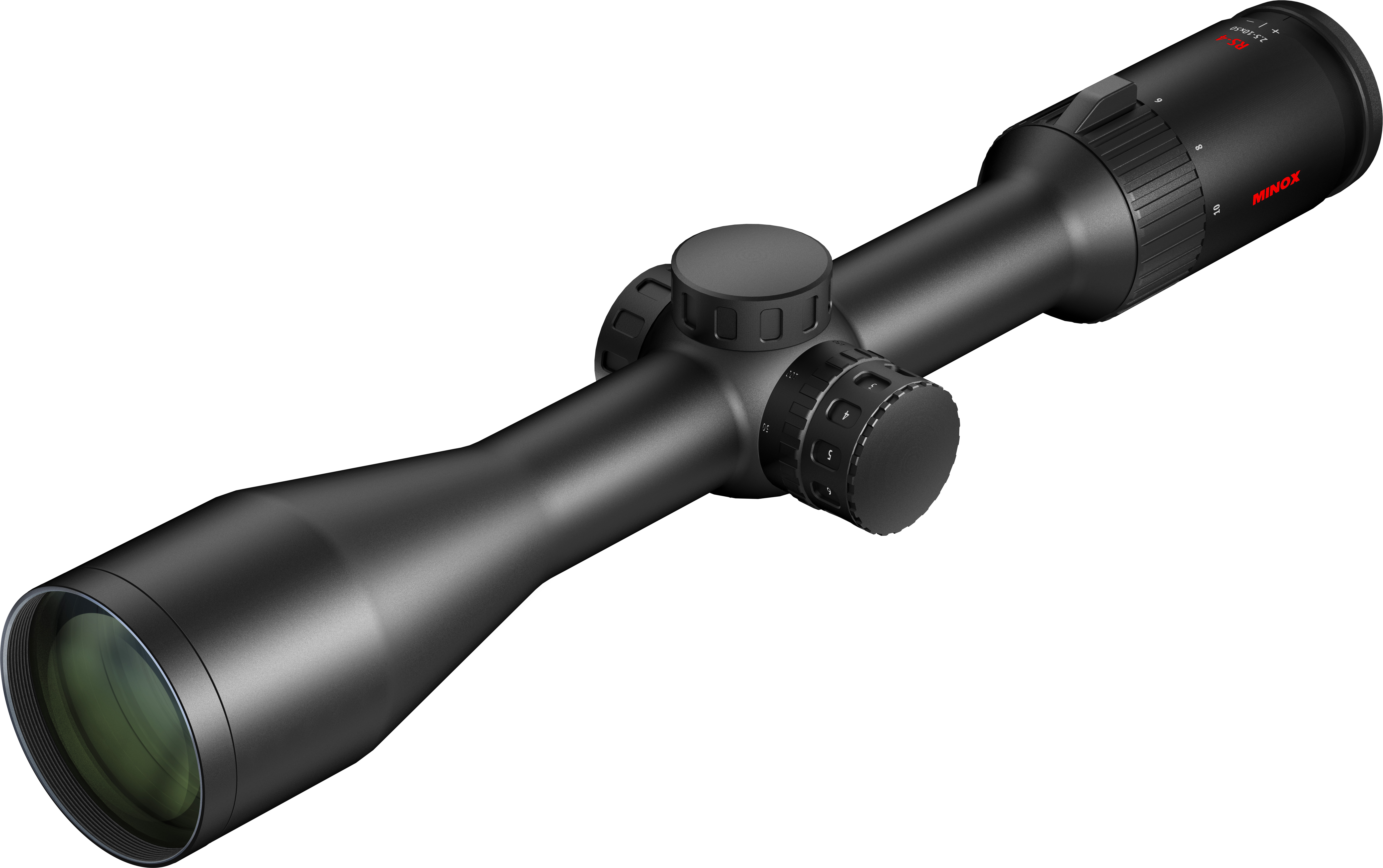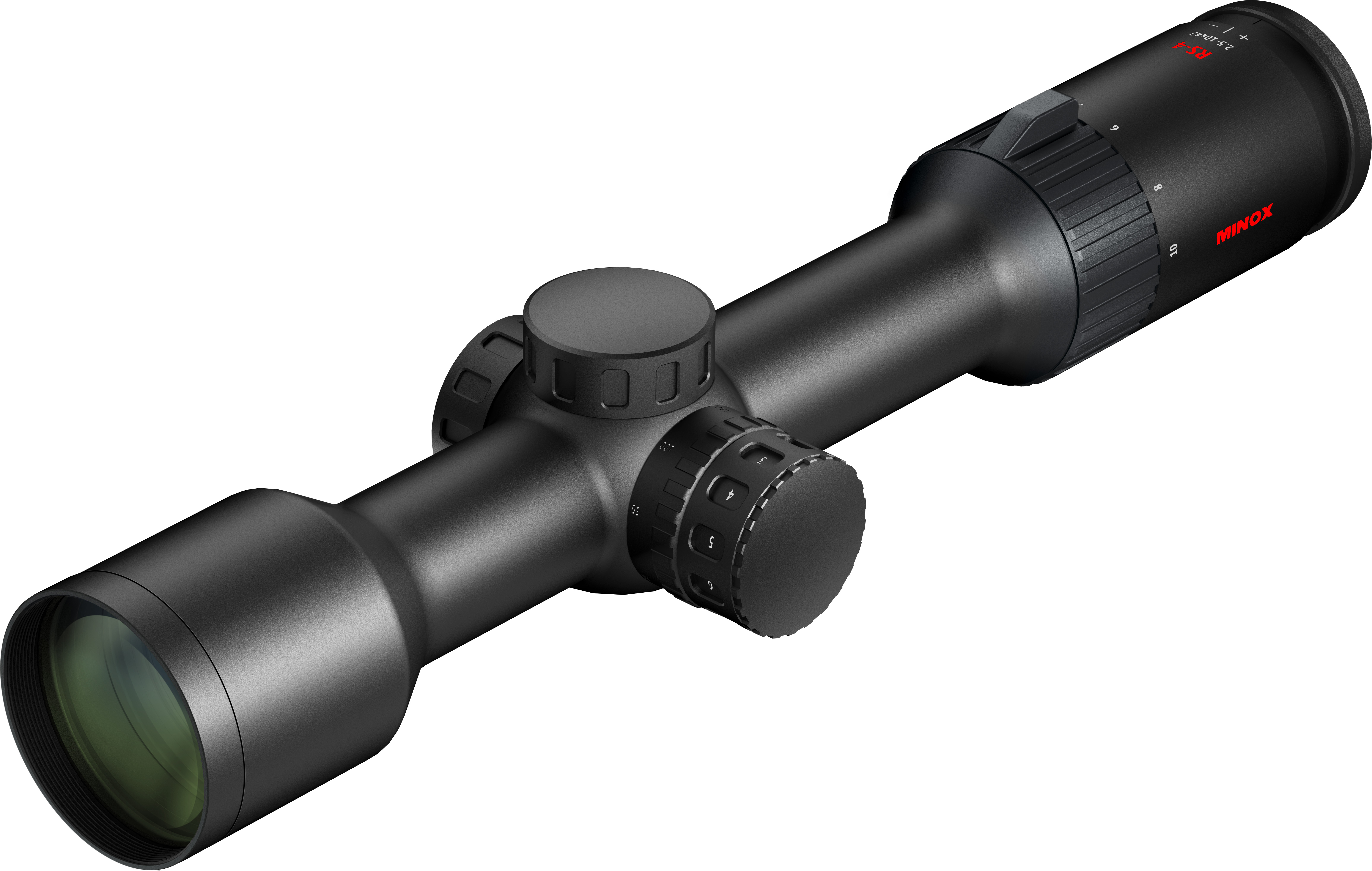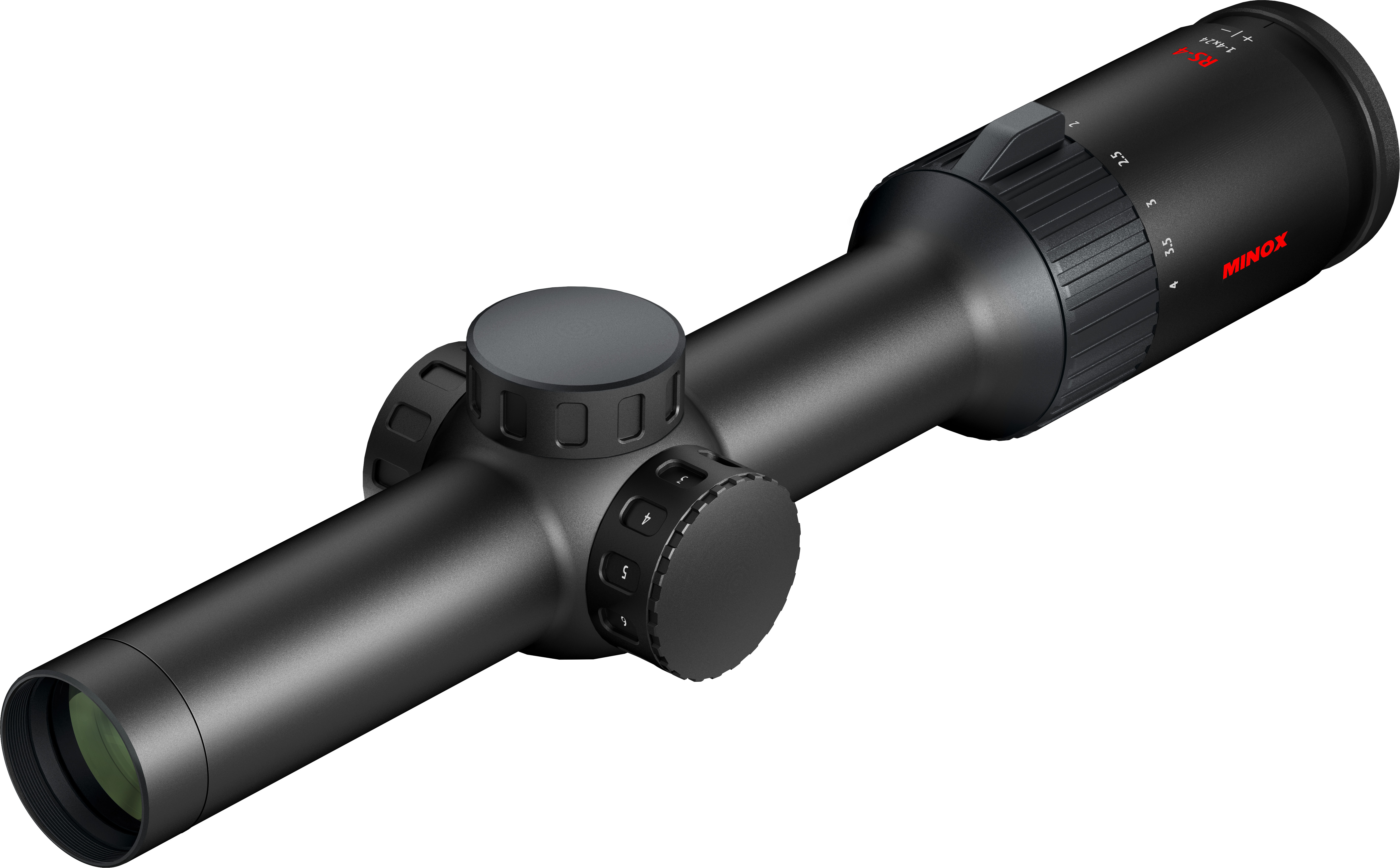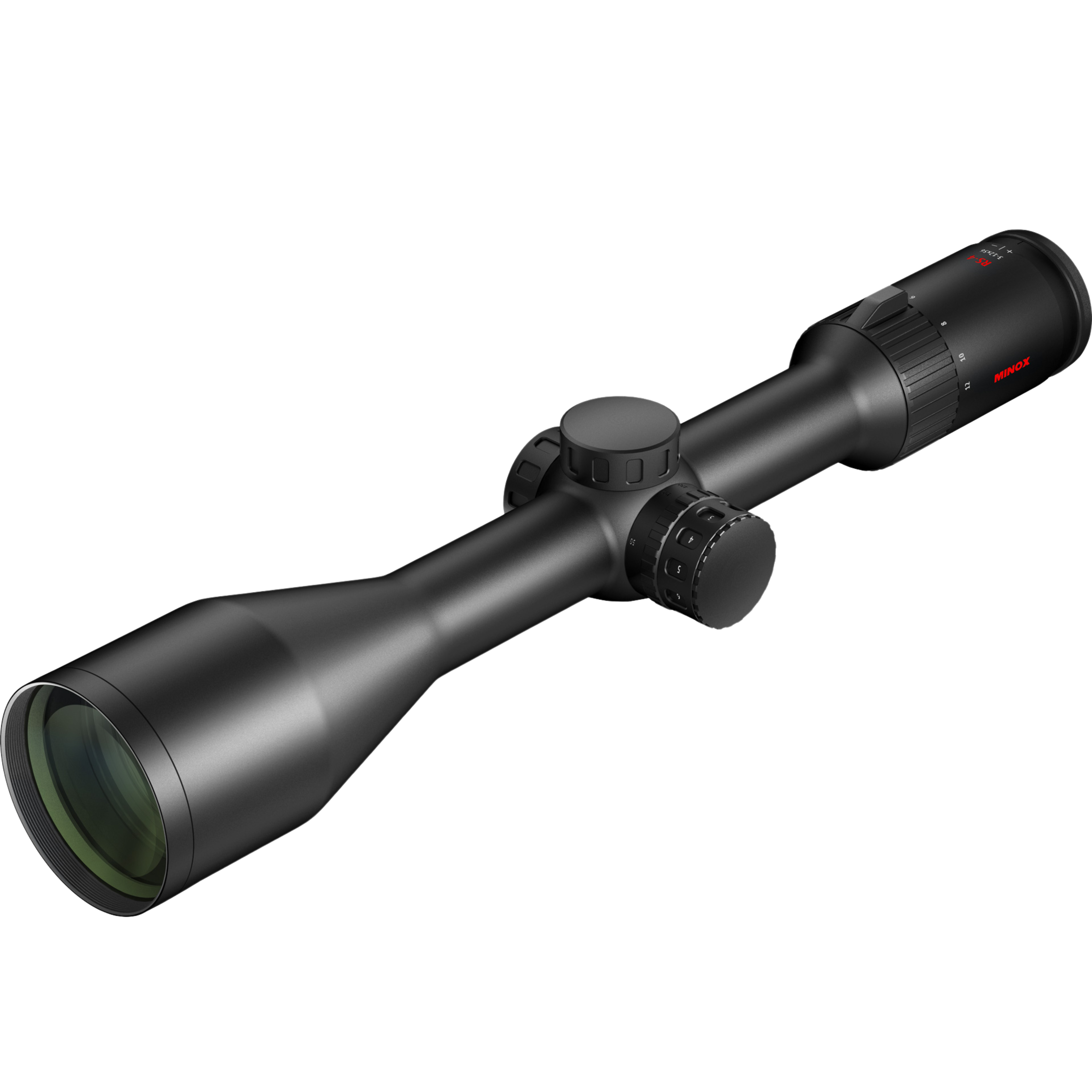PART I: THE BASICS OF LONG-RANGE OPTICS
Long-range hunting and sport shooting are becoming increasingly popular among marksmen and hunters alike. To achieve precision at extended distances, high-quality optics are essential. In this article, we delve into the critical criteria for long-range scopes and highlight the MINOX LR and MINOX ZP5 models, which are particularly well-suited for long-distance shooting.
Key Components of a Long-Range Scope
Objective Lens
The size and quality of the objective lens are critical for light transmission. A larger lens provides superior brightness, especially under low-light conditions, but also adds bulk and weight to the scope, which may be inconvenient in the field. When choosing the right optics, it is therefore important to consider whether you are prepared to accept the additional weight for better viewing conditions. Most long range optics usually have a 50 or 56 mm lens.

Magnification
High magnification is vital for long-range optics, as they must cover distances of several hundred meters. The optimal magnification depends on the intended use: extreme distances may require magnification upwards of 25x, while 12x to 15x may suffice for moderate ranges. It’s important to ensure that high magnification doesn’t overly restrict the field of view, as this can hinder target acquisition. Additionally, inexpensive optics often exhibit edge blur at higher magnifications. Common magnification ranges include 4-20x, 5-25x, and 8-40x for ultra-long distances.
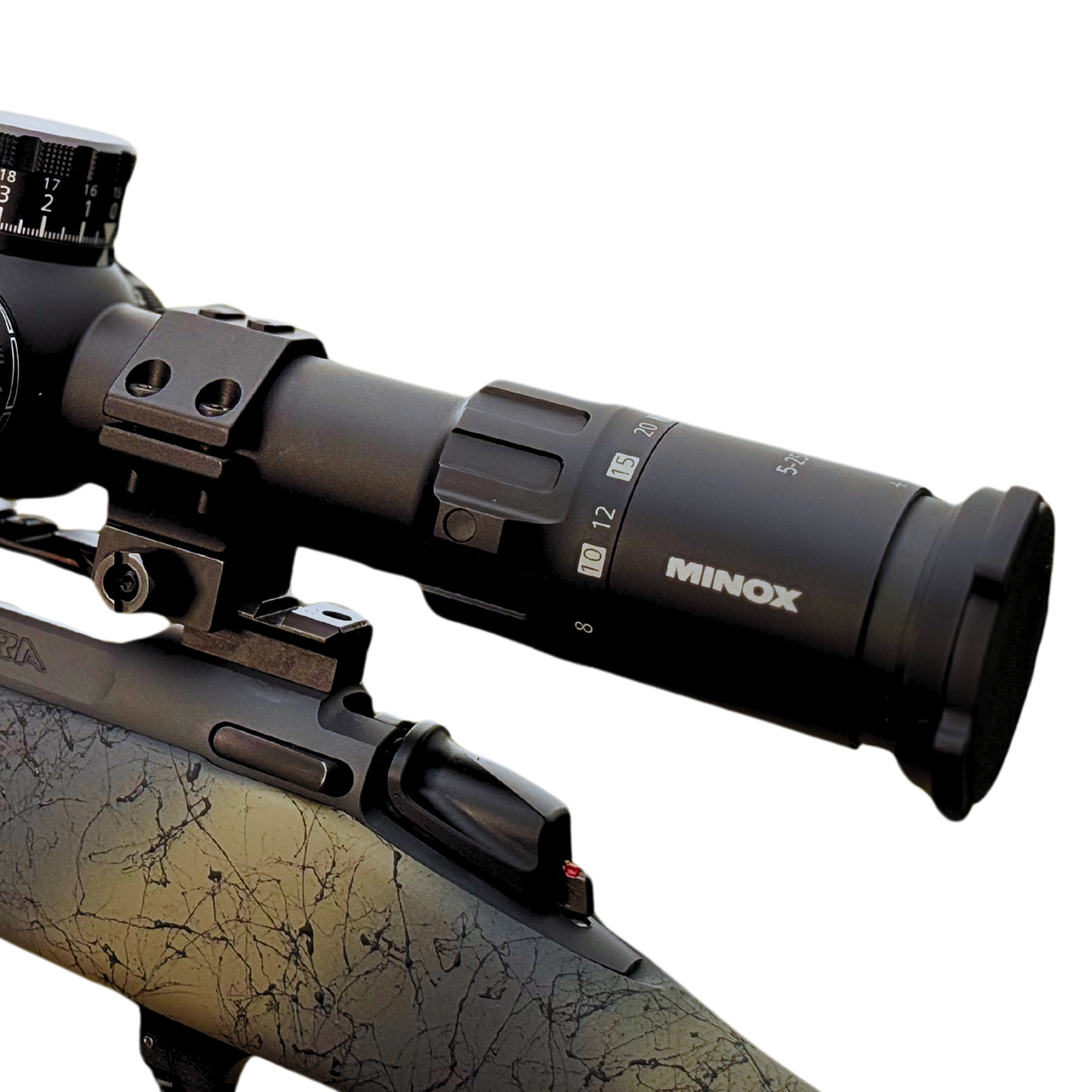
Reticle
The reticle is one of the most important aspects when selecting a long-range glass. There are various reticle systems/types, from simple duplex (crosshair) reticles to complex MIL or MOA reticles, which provide hold marks for different distances and wind corrections. A MIL reticle is particularly advantageous for long-range optics, as it works in metric units and enables precise calculation of distance and bullet drop. A combination of reticle and windage turrets allows the shooter to correct the point of impact quickly and precisely. In another article, we will look in detail at the aspects of correct reticle selection and show how to work with a reticle. In addition to the choice of reticle, the choice of image plane for the reticle is also an important aspect. Long range optics used in the metric system usually have a MIL reticle in the 1st image plane (BE). With reticles in the 1st focal plane, the dimensions of the reticle remain the same despite a change in magnification, meaning that you can work with the reticle at any magnification setting. Furthermore, MIL reticles harmonise better with the metric measuring system; conversely, MOA reticles harmonise better with the imperial measuring system.
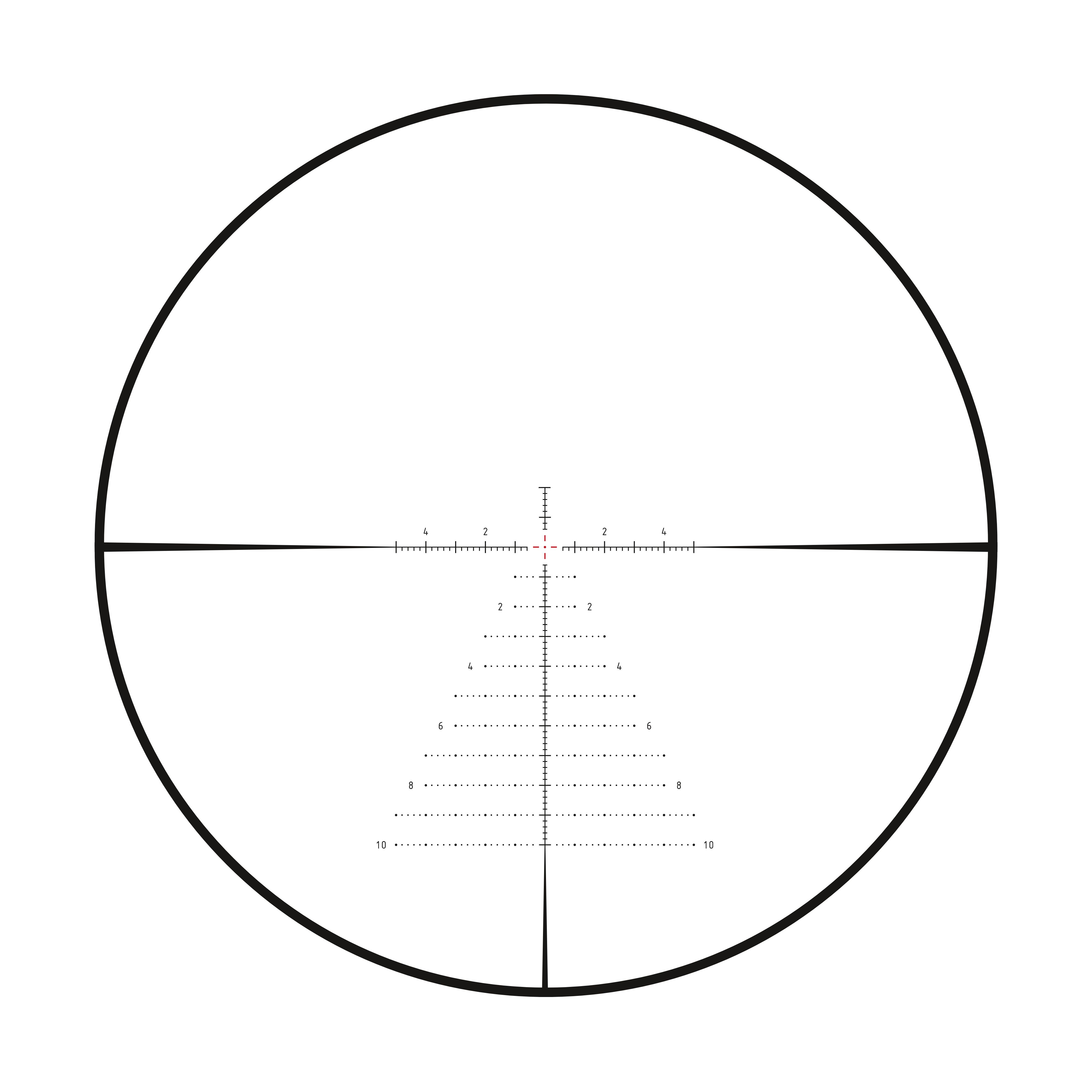
Turrets
The elevation and windage adjustment turrets are another key element of long-range optics. They make it possible to match the shot precisely to the target by correcting the point of impact by adjusting the bullet trajectory. The precision and reliability of the turrets are crucial, especially at long ranges, where even small errors can have major consequences. Ideally, the adjustment steps on the adjustment turrets correspond to the dimensions of the reticle. Often the adjustment turrets of long range optics with MIL reticles have 0.1 MIL adjustment steps, which means that 10 clicks on the adjustment turret correspond to one MIL and an MIL is often easily recognisable in the reticle.
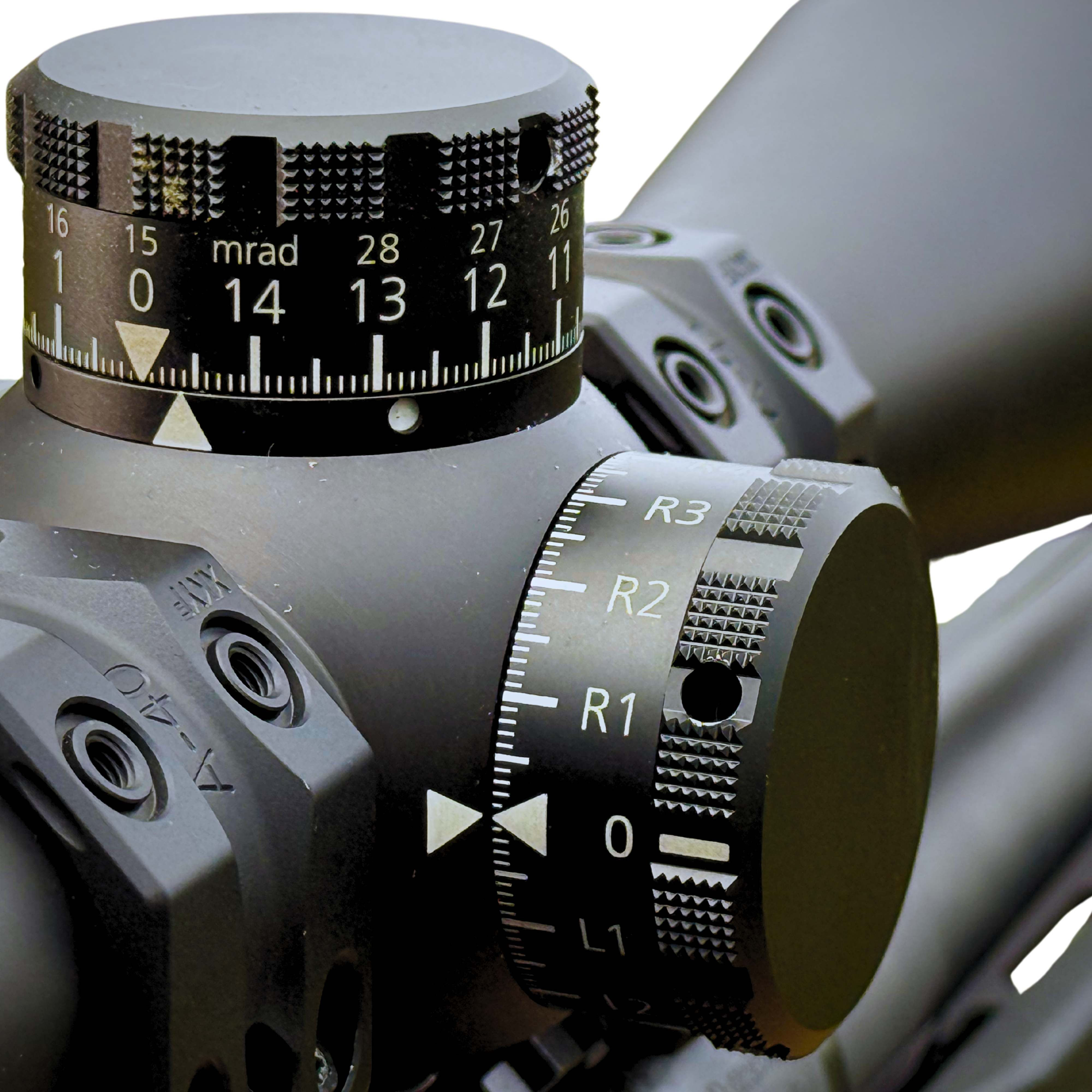
Parallax Adjustment
In addition to the adjustment turrets, there are often other turrets, one of which is usually the parallax compensation. In another article in this series, we will show you how to adjust an optic, and we will also explain the theory behind parallax compensation. Roughly summarised, parallax compensation is used to compensate for the shift between the shooter's line of sight and the sight line of the optic. By design, this can only ever be done at one distance, but if you want to shoot at different distances, as in long-range sport, you are dependent on parallax compensation.
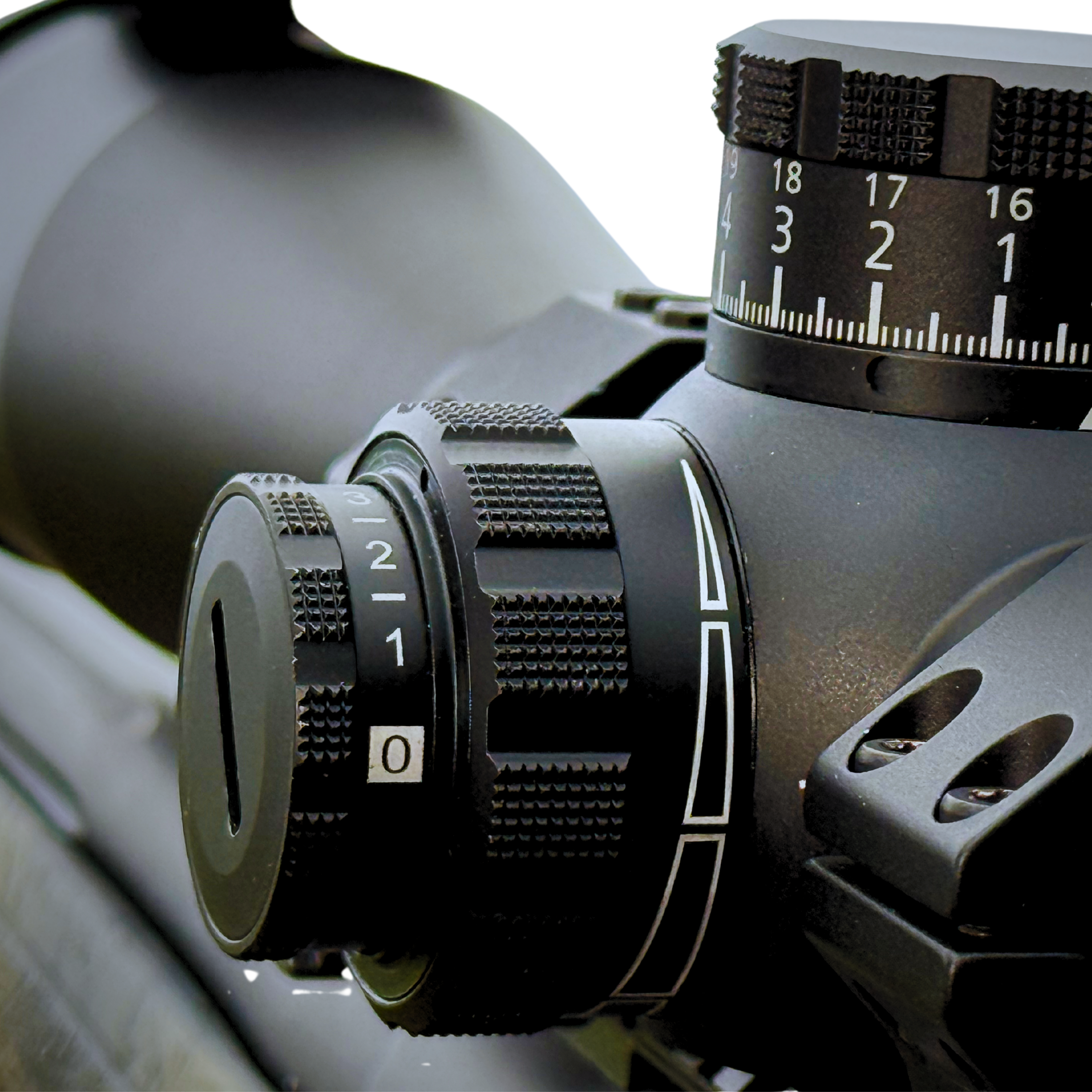
A common problem with conventional hunting/sports optics is the lack of precise adjustment options.
These optics are designed for distances of up to 200 metres and often offer only rudimentary options for correcting the point of impact at greater distances. The ballistic drop of the bullet becomes clear from 190 metres and requires precise correction in order to ensure that the shot is accurate. Without the ability to adjust the shot using adjustment turrets or a reticle marker, it becomes difficult to hit accurately at distances of 300 metres or more.
Price Considerations: ZP5 vs. LR
Choosing the right long range optics depends not only on the technical requirements, but also on the available budget. The MINOX ZP5 and MINOX LR models offer different functions and are aimed at different target groups, which is why it is important to consider the price difference and the individual requirements of the shooter.
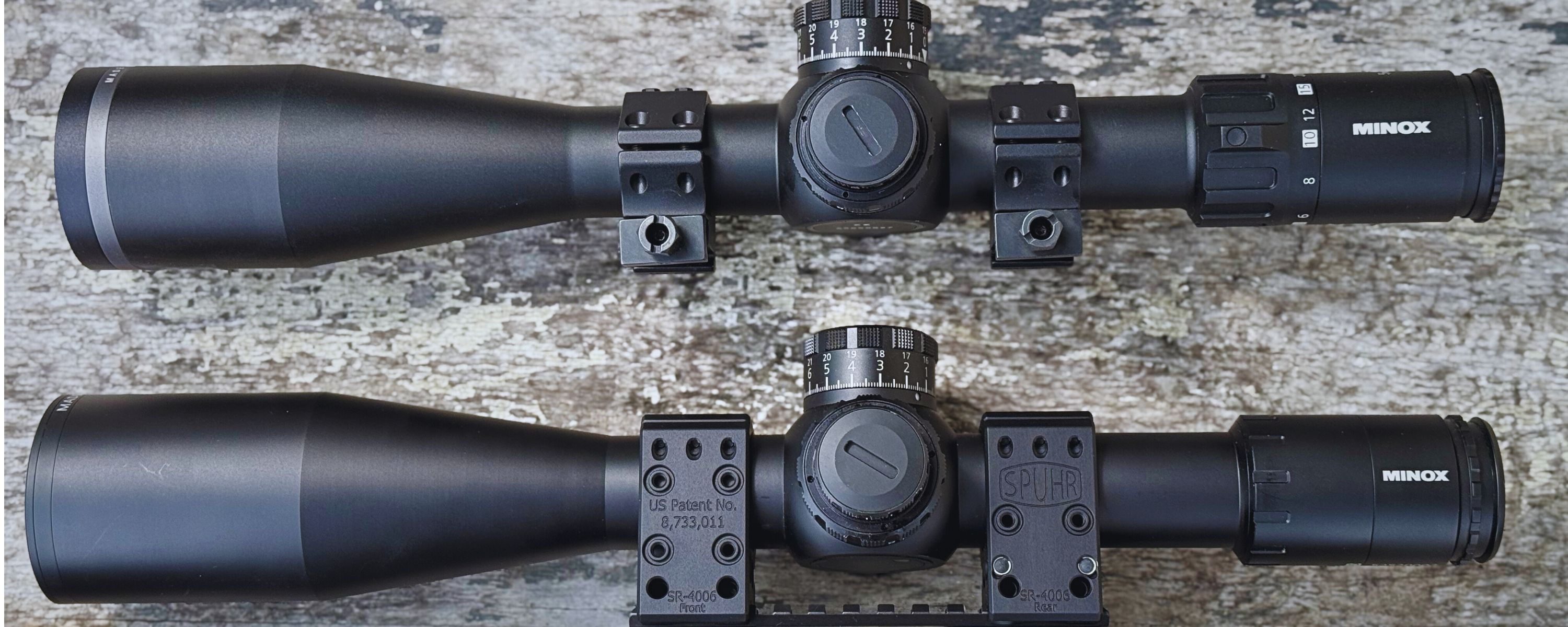
MINOX ZP5 5-25x56
Designed for professionals, the ZP5 series adheres to MIL-SPEC standards, handcrafted in Wetzlar, Germany, for unparalleled precision and durability. Features include robust, lockable turrets, a lockable diopter adjustment, and the advanced MR4 Pro reticle with a measurement frame for precise range estimation. These attributes make the ZP5 ideal for extreme conditions, as required by military and law enforcement.
The price difference between the ZP5 series and the LR series is due to the complex manufacturing process and the extremely high demands placed on MIL-SPEC optics. The lens is highly coated and the entire optical system is designed for extreme conditions. This makes the ZP5 optics the first choice for demanding users who have to rely on absolute precision and durability.
MINOX LR
In contrast, the MINOX LR offers an excellent value for money, tailored to ambitious sports shooters and hunters who don’t require MIL-SPEC compliance. The LR series features smooth turrets and a durable construction suitable for most long-range applications. Its MR4 reticle in the FFP ensures proportional scaling across magnifications, enabling accurate range estimation.
If you are looking for a high-quality long-range optic but do not need the high requirements and price of the ZP5 series, the LR optic is the best choice. For most sport shooters and hunters, the LR model offers all the necessary functions at a significantly lower price. Both optics fulfil the above-mentioned criteria for a long-range optic and differ in the resistance of the turrets, the reticle illumination, the coating of the lenses and their bearings.
How can I optimally test my optics on a 100m stand? Introduction of the MINOX Long Range target
A good optic is only as good as the training the shooter puts it through. To support this, MINOX has developed a special long range target which is optimised for training at 100 metres and can be downloaded free of charge. This target has been designed to control the point of impact at 100 metres and to carry out various training exercises suitable for both small and large calibre weapons.
How can I optimally test my optics on a 100m stand?
Introduction of the MINOX Long Range target
A good sight is only as good as the training that the shooter completes with it. To support this, MINOX has developed a special long range target that is optimised for training at 100 metres and can be downloaded free of charge. This target has been designed to control the point of impact at 100 metres and to carry out various training exercises suitable for both small and large calibre weapons.
The MINOX Long Range target has several zones and fields that have been specially developed for long range training:
- 100m Zero target: This target is located at the top of the target and is used to check the point of impact. Here, shooters can check whether their weapon is correctly adjusted and whether the optics show the desired point of impact.
- 35 Einzelfelder: Jedes der Einzelfelder hat eine Kantenlänge von 10 cm, wobei der große Kreis einen Durchmesser von 5,8 cm (2 MOA) und der kleine Kreis 2,9 cm (1 MOA) hat. Diese Felder bieten verschiedene Übungsmöglichkeiten, um Präzision und Zielgenauigkeit zu trainieren.
- For example, an exercise could consist of checking the point of impact at 100 metres with a three-shot series within 50 seconds. Exercises such as changing magazines, shooting with a weak hand or firing at targets within a certain time window can then be carried out. In the course of this series of articles, we will show you some ways of using this target for your own training.
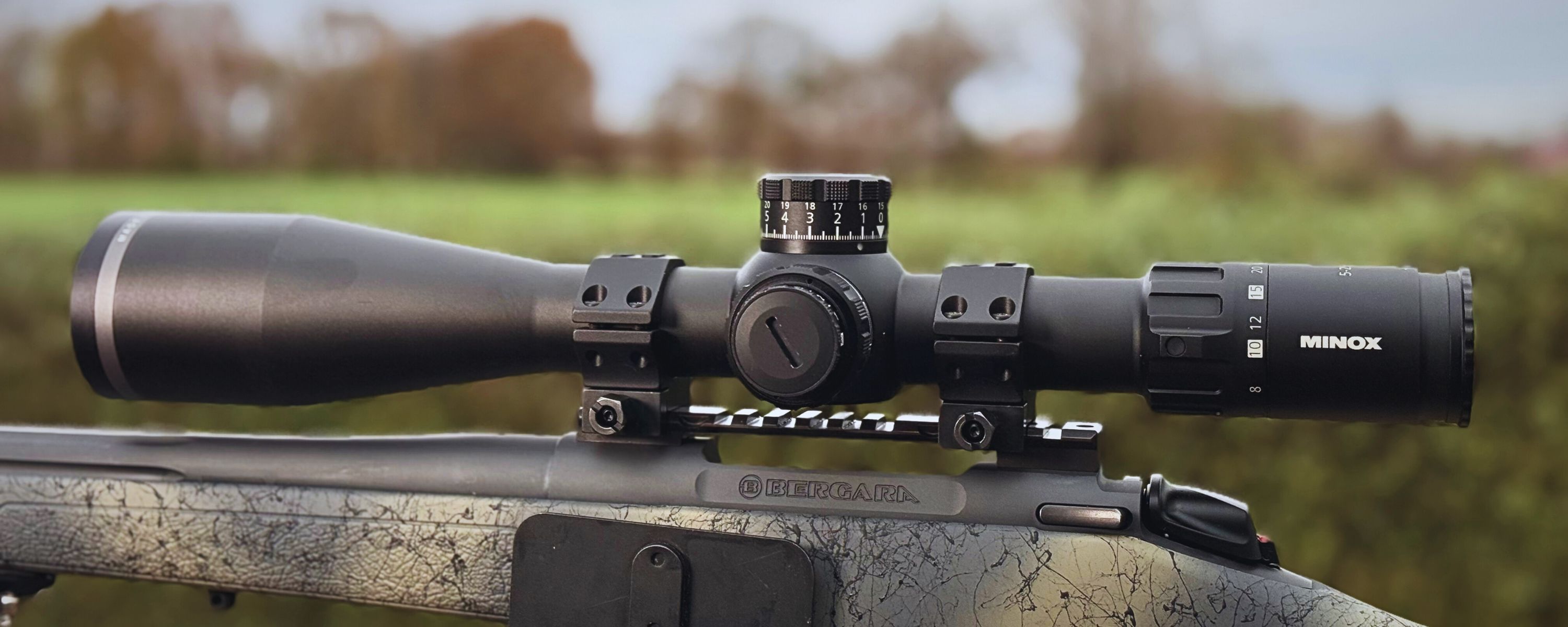
CONCLUSION
Choosing the right long range optics depends on many factors, including magnification, reticle quality/image plane and turret accuracy. The MINOX LR and MINOX ZP5 models offer two excellent options for shooters who want to shoot at long distances. While the ZP5 model is designed for maximum precision and robustness for official and professional applications, the LR model offers excellent value for money for ambitious sport shooters and hunters.

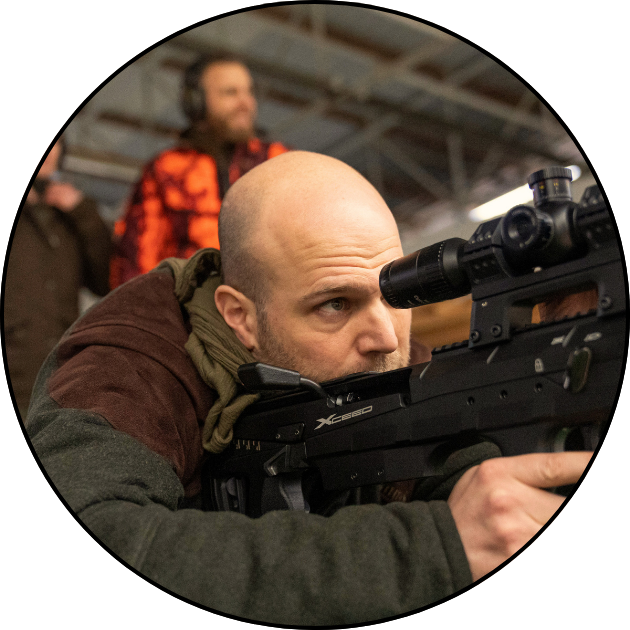
Michael Gast
Michael ‘Gasti’ Gast is a former paratrooper officer and platoon leader of the specialised forces HEER EGB. As part of his training as a paratrooper officer, he studied business administration at the Bundeswehr University in Hamburg and trained as a shooting instructor and shooting instructor for specialised forces. After leaving the service, Michael set up his own business and runs the IHK shooting instructor course, trains state forestry companies in shooting and runs the 1MOA GmbH hunting weapons trade.
Equipment:
HMS Strasser RS700 in 6,5 PRC
MINOX MD80ZR
MINOX Riflescope PRO ZP5 5-25x56
MINOX Riflescope LONG-RANGE
